
12 Best Lunch Spots In Napa
Best Lunch In Napa – Our 12 Favorite Spots! Lunch is a must when you’re out wine tasting! Whether you’re in the mood for a
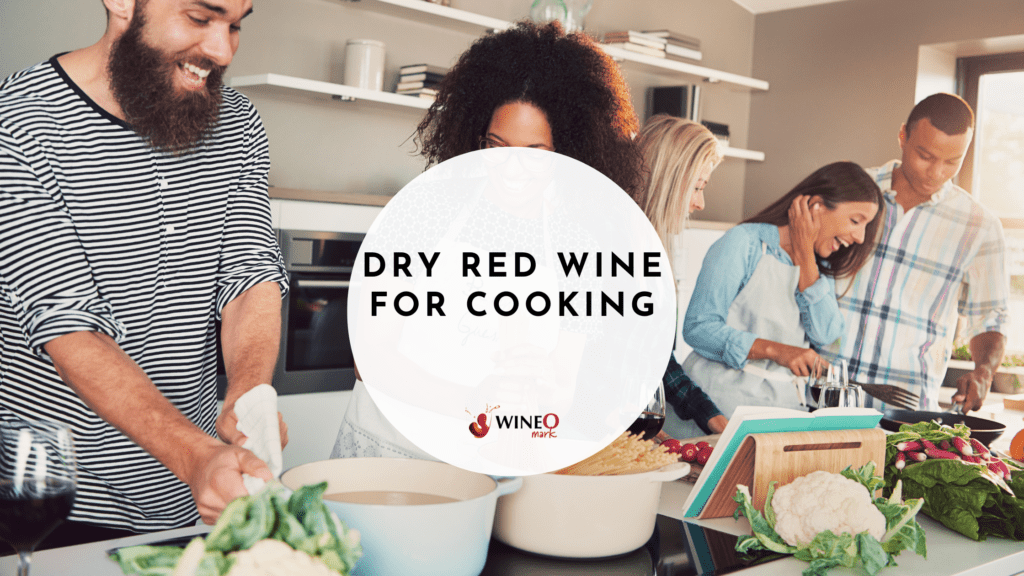
Dry red wine is a popular ingredient used in many recipes, especially in savory dishes. Because it adds depth, richness, and complexity to sauces, stews, marinades, and more.
And when it comes to choosing a red wine for cooking, it’s essential to use a good quality wine that has the right balance of acidity, tannins, and flavor.
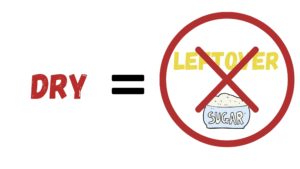
Dry red wine is a type of wine that contains very little residual sugar. And it’s made from red grapes that are fermented without adding any additional sugar or sweeteners.
The term “dry” refers to the absence of sweetness in the red wine, meaning that it is not sweet like dessert wines.
During the fermentation process, yeast consumes the natural sugar in the grape juice and converts it into alcohol. And the more sugar that is fermented, the higher the alcohol content in the resulting wine. Therefore, dry red wines typically have an alcohol content between 12% – 16%.
Dry red wines can vary in flavor, depending on the type of grape used and the winemaking techniques employed. Some common varieties of dry red wines include Cabernet Sauvignon, Merlot, Pinot Noir, Syrah or Shiraz, and Zinfandel. And these dry wines can range from light-bodied and fruity to full-bodied and bold.
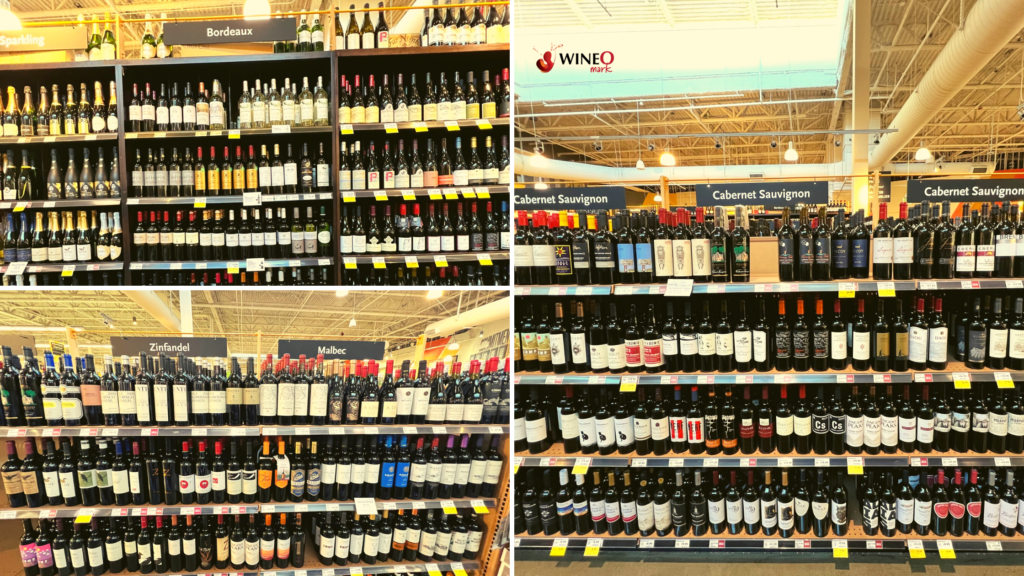
When selecting a red wine for cooking, you don’t need to spend a lot of money. A relatively low to mid-priced wine that you would enjoy drinking is an excellent choice for cooking.
And the wine you choose should complement the flavors in your dish and add to the overall experience of eating it.
When heading to a wine shop, here’s our #1 Tip for choosing a red wine for cooking:
Never over $20. And if you won’t drink it, don’t use it!
Merlot: A medium-bodied wine with soft tannins and a fruity flavor. And it’s an ideal wine for sauces, gravies, and marinades.
Pinot Noir: This wine is light-bodied, with low tannins and a delicate flavor. So it’s a perfect cooking wine for dishes that require a lighter touch, such as mushroom risotto, poached salmon, and chicken in red wine sauce.
Syrah or Shiraz: This wine has a bold, spicy flavor with high tannins. Therefore, it’s an excellent choice for rich, meaty dishes like lamb shanks, beef bourguignon, beef stew, and beef stroganoff.
Zinfandel: This medium to full bodied wine has a fruity and jammy flavor. Making it a perfect red wine for cooking tomato-based dishes like spaghetti bolognese, lasagna, and chili.
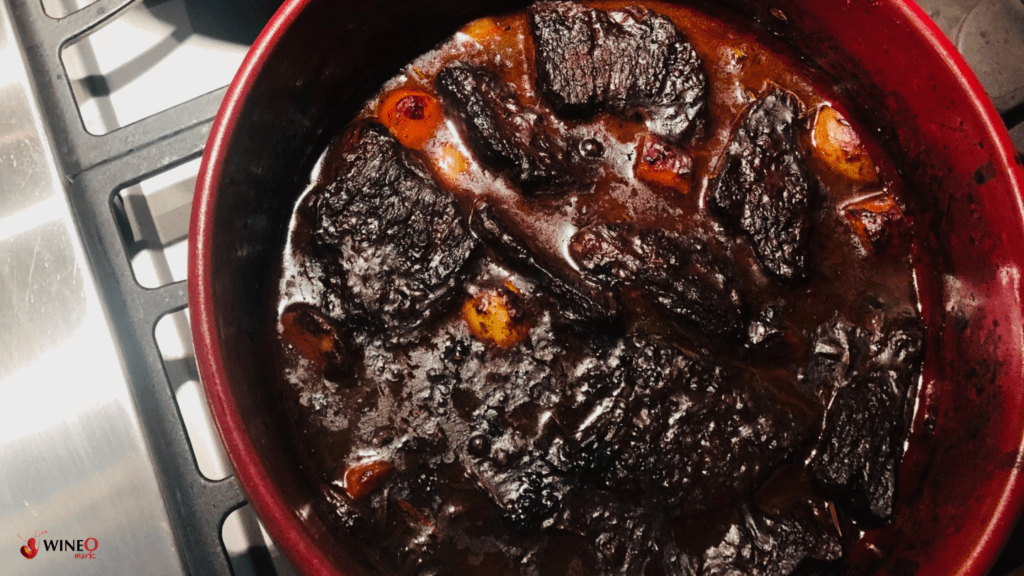
Cooking with dry red wine can enhance the flavor and complexity of a dish. Wine is a natural flavor enhancer that can add depth and richness to sauces, stews, and marinades. The acidity in wine can also help to balance out the flavors in a dish and make it taste more well-rounded.
In addition to enhancing the flavor of a dish, cooking with red wine can also add a beautiful color to sauces and stews. The tannins in red wine can give a dish a rich, deep dark color that is visually appealing and adds to the overall experience of eating the dish.
Dry red wine is an excellent choice for cooking because it has a lower sugar content than sweet wines (ex. fortified wine).
Choose the right wine: When selecting a wine to cook with, choose a dry red wine that you enjoy drinking. Good choices include Cabernet Sauvignon, Merlot, Pinot Noir, Syrah, or Zinfandel. Avoid using “cooking wines” that are sold in grocery stores, as they often have added salt and preservatives that can affect the flavor of your dish.
Use wine that is at room temperature: Avoid using wine straight from the fridge as it can shock the other ingredients and affect the flavor of your dish. Allow the wine to come to room temperature before using it.
Add the wine early in the cooking process: Add the wine early in the cooking process so that it has time to reduce and concentrate with intense flavor. This will help to meld the flavors together and create a more complex and rich sauce or dish.
Don’t add too much wine: While wine can enhance the flavor of a dish, too much wine can overpower it. Use just enough wine to add depth and complexity to your dish without making it too alcoholic or acidic. As a general rule of thumb, use about 1/2 to 1 cup of wine for every 4-6 servings of food.
Use wine to deglaze the pan: When cooking meat, use wine to deglaze the pan and scrape up any browned bits on the bottom. This will help to create a rich and flavorful sauce.
By following these tips, you can create delicious and complex dishes that will impress you and your guests.
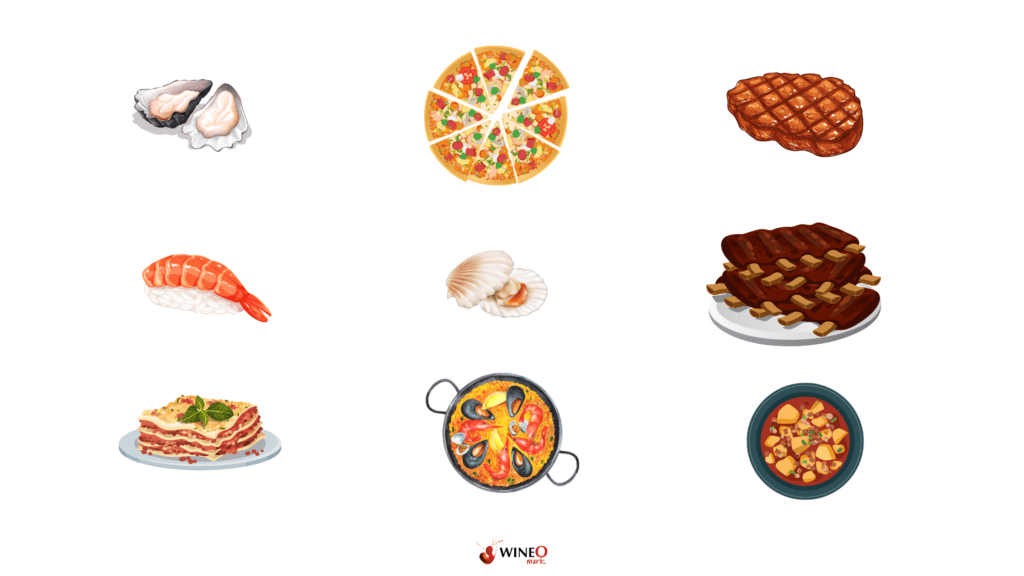

Best Lunch In Napa – Our 12 Favorite Spots! Lunch is a must when you’re out wine tasting! Whether you’re in the mood for a

North Coast Wine Co. Outerbound Pinot Noir – WineO Mark Review Wine Stats Grape Variety: 100% Pinot Noir Vintage: 2019 ABV: 14% Wine Region: North Coast,

Böen Pinot Noir – WineO Mark Review Wine Stats Grape Variety: 100% Pinot Noir Vintage: 2021 ABV: 14.6% Wine Region: California Flavor Profile: Cherry, raspberry, blackberry,

Merry Edwards Sauvignon Blanc – WineO Mark Review Wine Stats Grape Variety: 100% Sauvignon Blanc Vintage: 2022 ABV: 14% Wine Region: Russian River Valley, California
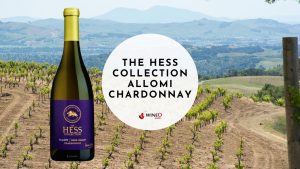
The Hess Collection Allomi Chardonnay – WineO Mark Review Wine Stats Grape Variety: 100% Chardonnay Vintage: 2019 ABV: 14.3% Wine Region: Napa Valley, California Flavor Profile:

Stags’ Leap Chardonnay – WineO Mark Review Wine Stats Grape Variety: 100% Chardonnay Vintage: 2022 ABV: 14.1% Wine Region: Napa Valley, California Flavor Profile: Oak, vanilla,

Godeval Cepas Vellas Godello – WineO Mark Review Wine Stats Grape Variety: 100% Godello Vintage: 2021 ABV: 13% Wine Region: Valdeorras, Spain Flavor Profile: Peach,

Félix Solís Mucho Más Tinto N.V. – WineO Mark Review Wine Stats Grape Variety: Tempranillo, Syrah Vintage: Non-Vintage ABV: 14% Wine Region: Spain Flavor Profile: Vanilla,
